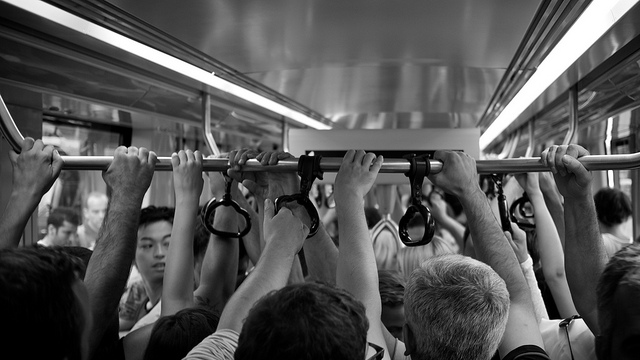 Here in the US, we have a quite unhealthy addiction to our cars, and tend to see them as not just a mode of transportation, but as a symbol of our autonomy and freedom, so much so that most traffic jams are filled with single drivers, all expressing their autonomy at 5 miles per hour.
Here in the US, we have a quite unhealthy addiction to our cars, and tend to see them as not just a mode of transportation, but as a symbol of our autonomy and freedom, so much so that most traffic jams are filled with single drivers, all expressing their autonomy at 5 miles per hour.
But in many other parts of the world, owning a car is something that only the middle class can afford, and the rest of the population gets by on foot, on bike, or by public transportation.
And while we may be tempted to look down our noses at those who rely on mass transit or their own muscles to get to work or to the market, those types of transportation aren’t just a plebeian necessity that should be outgrown as soon as incomes rise, but rather are a key component to the smart cities of the future, and in fact are representative of democracy in action, according to Enrique Peñalosa, former mayor of Bogotá, Colombia.
 In this presentation at TEDCity2.0, entitled “Why buses represent democracy in action,” Peñalosa makes a number of salient points about the need for changing the transportation dynamic in order to build better cities.
In this presentation at TEDCity2.0, entitled “Why buses represent democracy in action,” Peñalosa makes a number of salient points about the need for changing the transportation dynamic in order to build better cities.
For one, the idea that mobility is about equality and equity, which might run counter to the thinking of many people in modern cities, who have given all of the power on the streets over to those who can afford to drive a car.
“The first article in every constitution states that all citizens are equal before the law. That is not just poetry. It’s a very powerful principle. For example, if that is true, a bus with 80 passengers has a right to 80 times more road space than a car with one.” – Peñalosa
In his time as mayor of Bogotá, from 1998 to 2001, more than 350 km of protected bicycle ways were created, along with a system of exclusive road lanes, just for for the use of public buses.
“When I became mayor, applying that democratic principle that public good prevails over private interest, that a bus with 100 people has a right to 100 times more road space than a car, we implemented a mass transit system based on buses in exclusive lanes. We called it TransMilenio, in order to make buses sexier. And one thing is that it is also a very beautiful democratic symbol, because as buses zoom by, expensive cars stuck in traffic, it clearly is almost a picture of democracy at work. In fact, it’s not just a matter of equity. It doesn’t take Ph.D.’s. A committee of 12-year-old children would find out in 20 minutes that the most efficient way to use scarce road space is with exclusive lanes for buses.” – Peñalosa
And instead of seeing bikeways as elitist hipster artifacts, he sees them as a symbol of the right to safe mobility:
“I don’t think protected bicycle ways are a cute architectural feature. They are a right, just as sidewalks are, unless we believe that only those with access to a motor vehicle have a right to safe mobility, without the risk of getting killed. And just as busways are, protected bikeways also are a powerful symbol of democracy, because they show that a citizen on a $30 bicycle is equally important to one in a $30,000 car.” – Peñalosa
Take 14 minutes out of your busy day and watch the full presentation from Enrique Peñalosa:
Do you agree that changing the transportation dynamic to integrate better public transportation, mass transit, pedestrian access, and protected bike lanes is key to building smart cities?
[Image: Thomas Leuthard]


Mr. Peñalosa is spot on, as usual. At the SF Public Library a few years ago, the former mayor talked about how a city creates behavior, emphasizing the importance of investing in sidewalks, mass transit infrastructure and communal public space, and shared his sensible vision explaining what actually makes a good city:
http://ecolocalizer.com/2009/07/08/what-is-a-good-city/
“The most valuable asset in a city is its road space. The road space can be used as a society wishes. How do you want to distribute this space between pedestrians, bicycles, mass transit and cars—this is a political decision. Trying to solve traffic jams with bigger roads is like trying to put out a fire with gasoline…”